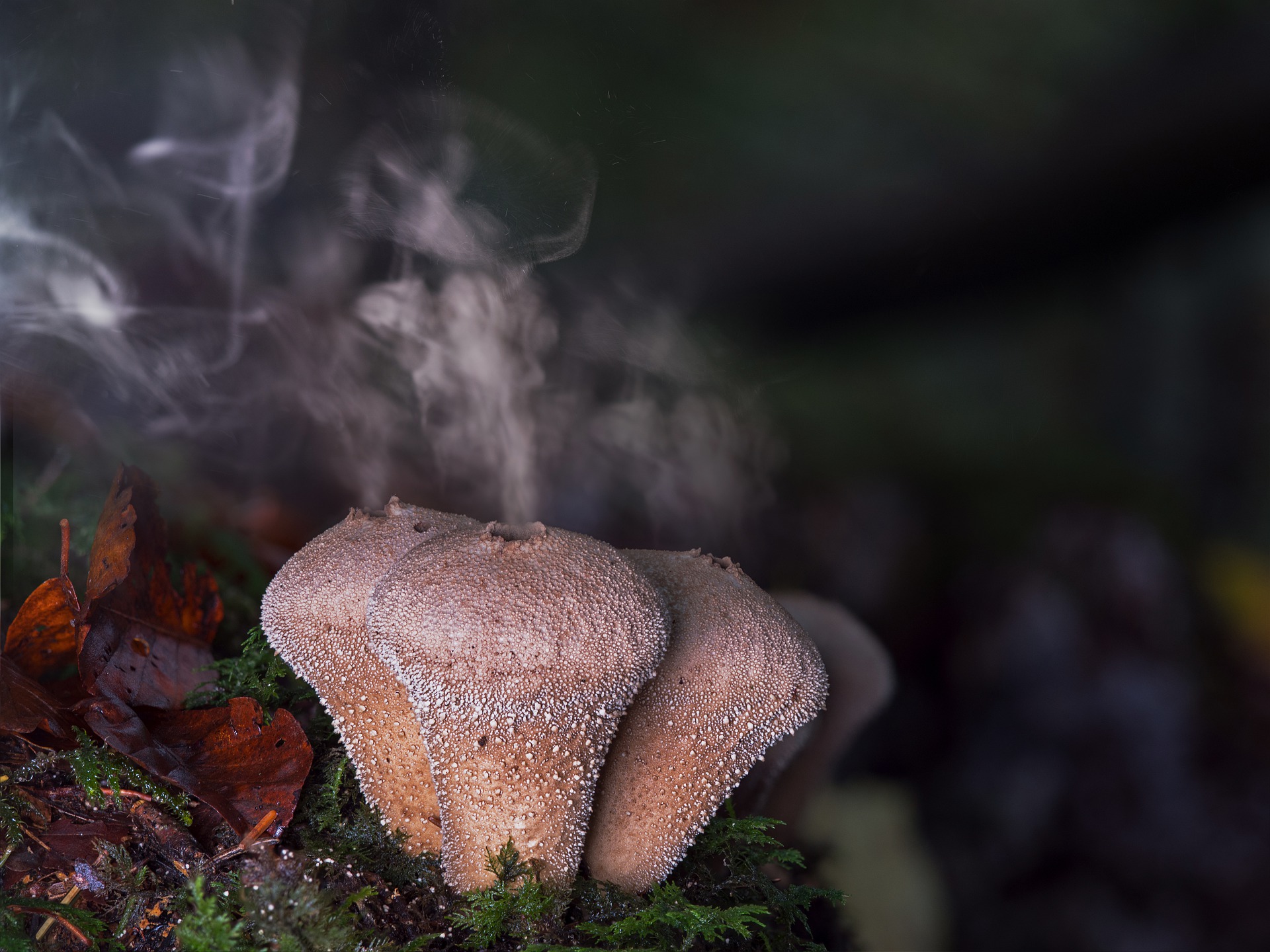 Microbiology
Microbiology
How nanosized shrapnel from exploding fungal cells may impact us: from allergies to cloud formation
Nano-sized fragments of fungal cells were detected in air over an agricultural area in the U.S. Great Plains region. These atmospheric particles most likely arose from the bursting of whole fungal cells and may play roles in seeding clouds and in spreading fungal allergens.

Invisible to the naked eye, we are almost always surrounded by small particles suspended in the air. They are known as atmospheric aerosols and can be made of directly emitted particles like dust, sea salt, and viruses; or formed in the atmosphere out of molecules like sulfuric acid and ammonia. Depending on their size and makeup, they affect our environment in big ways, despite their tiny size.
Aerosols absorb and reflect radiation, modifying the temperature of the air and Earth's surface, and contribute to the smog that reduces visibility. They act as cloud seeds - clouds are collections of water droplets or ice crystals that each started from an atmospheric particle which took up water. They negatively impact human health by being a cause of cardiovascular disease in polluted urban areas, and they include the pollen and fungal spores that can cause allergic reactions and asthma attacks. But just as aerosols exist in various sizes and compositions with different impacts, they aren't created in the same way.
We were interested in studying how aerosols form "out of thin air" and conducted experiments at a Department of Energy measurement site in Oklahoma, USA. Aerosols can be created by gases in the air reacting together under special conditions to form solid particles. To understand what molecules are important in this process, we set out to measure which ones were present in newly formed particles. However, we also found something unexpected in the air: nano-sized bits of fungus. These fungal fragments were about 20-50 nm diameter, approximately 1000x narrower than a human hair and many times smaller than even a single bacterium.
How did we determine this? We sampled atmospheric aerosol with a specially designed mass spectrometer. A mass spectrometer is able to identify the chemical formula of molecules that it samples by accurately measuring the molecule's mass (or weight). The aerosol was collected onto a thin platinum wire for 30 minutes. Then the wire was heated to "cook off" the collected material into gas molecules that could be detected by the mass spectrometer to tell us what was in the particles.
We found that there were occasions when several unusual molecules appeared at the same time. These molecules were identified as characteristic fungal cell materials: chitin and sugar alcohols such as mannitol. Individual cells in most fungi have mannitol stored as their carbohydrate source and chitin makes up the walls of their hard cells. Although this discovery suggested that we were detecting fungal material, the particles that we measured were too small to be intact cells or fungal spores. However, we were reminded of the research carried out by other scientists in the Amazon basin that could explain our findings. They had shown that under the right conditions, particularly with changes in humidity, fungal cells can burst into much smaller fragments. In that study, they hypothesized that such bursting events could produce nano-scale particles and release them into the air. We think that our evidence shows that they are right and that this process may occur in very different locations on our planet.
But why should we care about these particles? Intact biological particles like fungus and bacteria cells are exceedingly rare in the atmosphere, but they have very special properties. Some types are very efficient at forming ice crystals in the air and as a result, may influence the formation of high elevation clouds. Also, fungal particles can contain allergens and cause asthma attacks, for example in "thunderstorm asthma" triggered by storms. We expect that the nano-fungus has the same or similar properties as the intact cells they came from. But unlike their larger, intact counterparts, these ultrafine fungal particles can be hundreds or thousands of times more abundant.
However, these hypothesized impacts of nano-sized fungus remain speculative, and many necessary avenues of investigations remain. Most importantly, we do not know the actual species of fungi that was detected in our study, and we do not know whether fungi which are good ice nuclei or important allergen sources burst in this way in the atmosphere. But we do know that even if they are small and seemingly negligible, these formidable atmospheric aerosols are capable of causing great changes around and within us!
Original Article:
Lawler MJ, Draper DC, Smith JN. Atmospheric fungal nanoparticle bursts. Sci Adv. 2020;6(3):eaax9051.
Edited by:
Dr. Vanessa Xavier , Senior Scientific Editor
We thought you might like
How a fungus causes the collapse of salamander populations
Nov 16, 2017 in Microbiology | 3 min read by Frank Pasmans , An MartelCollateral damage: antibiotics disrupt the balance in the gut
Jun 2, 2016 in Microbiology | 3.5 min read by Katri KorpelaInvisible allies for healthy juvenile growth
Oct 12, 2016 in Microbiology | 4 min read by Martin SchwarzerShort bursts of exercise improve brain function
Jan 18, 2018 in Psychology | 3 min read by David MoreauMore from Microbiology
Monoclonal antibodies that are effective against all COVID-19 -related viruses
Jan 31, 2024 in Microbiology | 3.5 min read by Wan Ni ChiaPlagued for millennia: The complex transmission and ecology of prehistoric Yersinia pestis
Jul 31, 2023 in Microbiology | 3 min read by Aida Andrades Valtueña , Gunnar U. Neumann , Alexander HerbigHow cellular transport can be explained with a flip book
Jun 5, 2023 in Microbiology | 3 min read by Christina ElsnerThe Achilles’ heel of superbugs that survive salty dry conditions
Apr 24, 2023 in Microbiology | 4 min read by Heng Keat TamNew chemistry in unusual bacteria displays drug-like activity
Mar 21, 2023 in Microbiology | 3.5 min read by Grace Dekoker , Joshua BlodgettEditor's picks
Trending now
Popular topics


